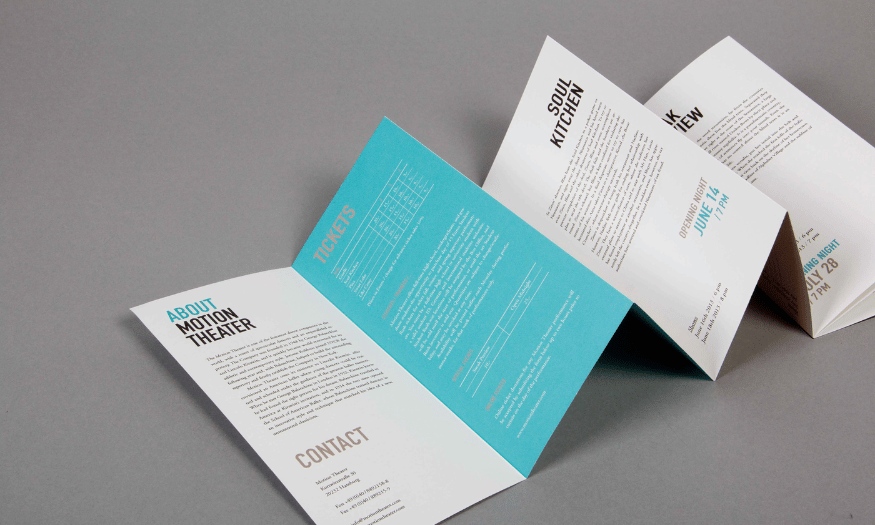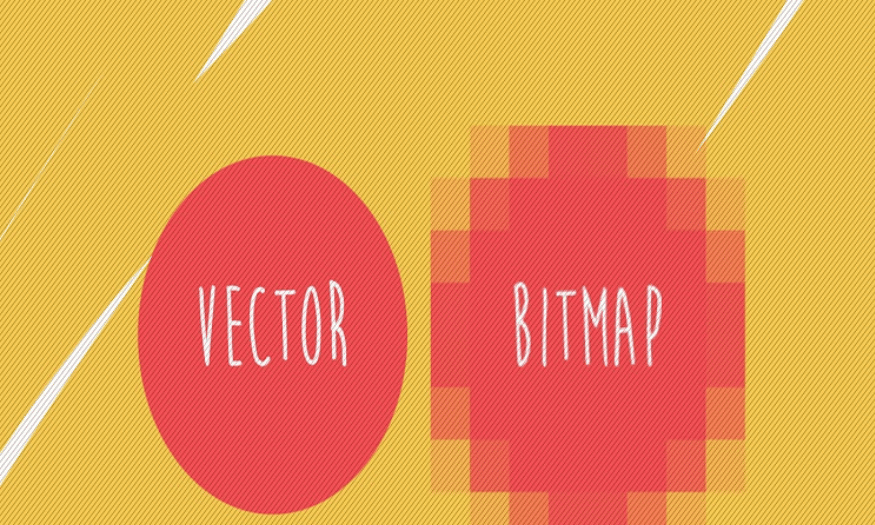Best Selling Products
What is Leaflet Design? Distinguishing Leaflet, Flyer, Brochure and Pamphlet
Nội dung
- 1. What is a Leaflet?
- 2. The role of Leaflets in marketing strategies
- 3. Advantages and disadvantages of Leaflet
- 3.1 Advantages of Leaflet
- 3.2 Disadvantages of Leaflet
- 4. Distinguish the differences between Leaflets and other advertising publications
- 4.1 Flyer
- 4.2 Brochure
- 4.3 Pamphlet
- 5. Professional Leaflet Design Creation Tool
- 5.1 Canva - The golden tool in design
- 5.2 Where should I upgrade to Canva Pro?
- 6. Conclusion
In the modern marketing world, leaflet design has become an important tool to convey information and promote products and services to customers. Leaflets, with their compact, easy-to-carry design, not only help businesses vividly introduce their brands but also create opportunities for customers to learn more about what they offer. However, many people often confuse leaflets, flyers, brochures and pamphlets. Each of these types of documents has its own unique characteristics, serving different purposes in communication strategies.

In the modern marketing world, leaflet design has become an important tool to convey information and promote products and services to customers. Leaflets, with their compact, easy-to-carry design, not only help businesses vividly introduce their brands but also create opportunities for customers to learn more about what they offer. However, many people often confuse leaflets, flyers, brochures and pamphlets. Each of these types of documents has its own characteristics, serving different purposes in communication strategies. The following article by Sadesign will help you better understand leaflet design, as well as distinguish between these popular types of advertising documents.
1. What is a Leaflet?
Leaflet is a small advertising document, usually designed as a single sheet of paper or a stack of paper folded into many pages. With the main purpose of conveying information about a company's products or services, leaflets become an effective tool in marketing and branding campaigns. Usually, leaflets are printed on high-quality paper, with eye-catching images and concise content, helping to attract customers' attention at first sight.
One of the strengths of leaflets is their compact size, allowing them to be easily distributed at events, fairs or via mail. With low printing costs, leaflets are an ideal choice for businesses looking for a cost-effective yet effective advertising method. Leaflet content often includes basic information about products, services, promotions and special offers, helping customers easily grasp information in a short time.
In addition to presenting information, the design of the leaflet is also very important. A beautiful leaflet, with harmonious colors and reasonable layout, not only attracts attention but also creates a deep impression of the brand. Thereby, the leaflet is not simply an advertising document but also a tool to build a brand image in the hearts of customers.
.png)
2. The role of Leaflets in marketing strategies
In any marketing strategy, choosing the right advertising tool is extremely important. Leaflets act as a bridge between businesses and customers, helping to convey messages effectively. With high accessibility, leaflets can be distributed directly at events, or sent by post, creating opportunities for businesses to reach new customers without investing too much in online or television advertising.
One of the outstanding advantages of leaflets is the ability to customize content for each specific customer segment. Depending on the field of operation, businesses can adjust the content and design of leaflets to suit the needs and interests of target customers. This not only helps increase the effectiveness of advertising campaigns but also creates sympathy and loyalty from customers.
With the development of information technology, businesses today not only use leaflets in paper form but also apply online formats. Electronic versions of leaflets can be shared via email, social networks or the business's website, helping to expand the reach and enhance online presence. This not only saves printing costs but also creates opportunities for businesses to interact with customers in a more flexible and effective way.
3. Advantages and disadvantages of Leaflet
3.1 Advantages of Leaflet
One of the main reasons leaflets have become a popular advertising tool is their low production costs. Compared to other media such as television, magazine or radio advertising, leaflets are more effective with a lower investment. This is especially important for small and medium-sized businesses that need to optimize their marketing budget to reach customers without spending too much.
Leaflets can be designed in many different forms, from Z-folds, rolls to envelopes. The variety of designs allows businesses to be creative and express their brand style in a unique way. If invested seriously in design, leaflets not only attract attention but also create a lasting impression on customers.
Leaflet content is often presented in a concise and easy-to-understand manner, helping customers quickly grasp important information about products and services. Promotions or offers are also highlighted, creating favorable conditions for attracting customers' attention. This not only increases interaction but also encourages customers to take immediate action.
With their compact size, leaflets can be easily distributed at points of sale, exhibitions, fairs and many other events. This helps businesses reach a wide range of customers without much hassle. The portability of leaflets is also a great advantage, allowing them to be carried and distributed flexibly.
3.2 Disadvantages of Leaflet
While the small size of leaflets makes them easy to distribute, it also limits the ability to convey detailed information. A leaflet cannot contain too much content, which can cause the advertising message to be incomplete or confusing to customers. As a result, customers may miss important information that the business wants to convey.
A major drawback of leaflets is that they do not have a lasting attention span. Once read, customers can easily throw them away without remembering the information provided. This reduces the effectiveness of the advertising campaign in the long run, because leaflets do not create a lasting impression like some other media.
If the design or content of the leaflet is not appealing enough, customers may ignore or refuse to receive it. Some customers may even find receiving promotional materials annoying, resulting in them not being interested in the product or service the leaflet promotes. This can limit the effectiveness of the business's outreach.
Many businesses often do not invest enough effort and time into leaflet design, resulting in the final product being boring and unattractive. Unoriginal content and unimaginative design can make customers feel uninterested. Therefore, to maximize the effectiveness of leaflets, businesses need to focus on investing in both form and content.
.png)
4. Distinguish the differences between Leaflets and other advertising publications
4.1 Flyer
Flyer is a type of leaflet usually in A4, A5 or A6 size, designed to convey information quickly and effectively. It is considered a community publication, often used to promote events, products or services at very low printing costs. Therefore, flyers are often produced in large quantities and distributed at intersections, fairs, exhibitions, to reach a large number of customers.
However, although flyers can be widely distributed, their ability to reach customers is not high. The content of flyers is often concise, focusing only on key information, which may prevent customers from fully grasping the value of the product or service. Compared to leaflets, flyers are somewhat simpler in terms of design and content, making the ability to make an impression not as strong.
One noticeable difference between leaflets and flyers is the paper material and color. Leaflets are usually printed on higher quality paper, with more eye-catching and professional color designs than flyers. This helps leaflets create a stronger attraction, while demonstrating a serious investment from the business in conveying its message.
.png)
4.2 Brochure
A brochure is a more professional piece of advertising, often used to introduce a business's products and services in detail. Brochures come in two main types: bi-fold and tri-fold. A bi-fold is folded into two sections, allowing for four sides of content, while a tri-fold can be folded into three sections, with a total of six sides of content. This allows businesses to organize information in a more logical and understandable way.
Compared to leaflets, brochures are often invested more carefully in terms of content as well as paper material. Brochures often use thick and glossy paper, giving a more professional and luxurious feel. This not only helps to enhance brand value but also creates a better impression on customers. The content in brochures often includes detailed product information, high-quality images and attractive design elements, making it easy for customers to grasp the message.
However, brochure production costs are often higher than leaflets and flyers. Therefore, brochures are often used in advertising campaigns that require professionalism, such as in seminars, large events or meetings with important customers. Investing in brochures can be more effective in building brand image and creating trust from customers.
4.3 Pamphlet
Pamphlets are advertising publications that resemble a small book, but without a spine. Pamphlets typically range from 5 to 48 pages, allowing businesses to convey more information than leaflets or flyers. Pamphlets are often designed exclusively for specific advertising campaigns, allowing designers unlimited creativity in presenting content.
Pamphlet content is often focused on providing detailed information about the product or service that the business wants to promote. With multiple pages, pamphlets allow for detailed and systematic presentation of information, making it easy for customers to grasp different aspects of the product. This is especially useful in cases where it is necessary to convey complex information or educate customers on a certain topic.
However, designing a pamphlet also requires attention to quality and professionalism. Although there is no set standard in design, a pamphlet that is carefully invested in form and content will create a better impression and attract attention from customers. Therefore, while leaflets and flyers can be considered basic advertising tools, pamphlets provide an opportunity for businesses to demonstrate their creativity and professionalism more clearly.
.png)
5. Professional Leaflet Design Creation Tool
5.1 Canva - The golden tool in design
Canva has emerged as one of the leading online design tools, used by many people to create impressive graphic designs, including leaflets. With a friendly and intuitive user interface, Canva allows users of all skill levels, from beginners to professional designers, to easily create high-quality design products.
With hundreds of ready-made templates, Canva gives you a wide range of options when it comes to creating leaflets. You can easily find designs that suit a variety of topics such as events, product promotions, promotions, and more. All you have to do is choose a template, customize the content and images to your liking, and in just a few minutes, you will have a complete and professional leaflet.
One of Canva’s strengths is its extensive resource base, which includes millions of images, videos, and graphics. This saves you time in finding the right elements for your design. Furthermore, Canva allows you to upload your own images, which further personalizes your design. Additionally, Canva also offers powerful photo editing tools, allowing you to easily resize, remove backgrounds, and apply filters to enhance your images.
Canva is more than just a design tool; it also helps you manage your projects. You can share your designs with colleagues, get feedback, and edit together online. This is especially useful for group projects where collaboration and communication are important. You can also export your designs in a variety of formats, from PDF to PNG and JPG, making them easy to use for a variety of purposes.
5.2 Where should I upgrade to Canva Pro?
Upgrading to Canva Pro at Sadesign is a smart decision for those who want to optimize their design experience. The Canva Pro package offers many premium features that the free version does not have, helping you create more unique and professional designs. With Canva Pro, you will have access to a huge resource of over 75 million high-quality images, videos, and graphics. This not only saves you time but also opens up many creative opportunities for your designs.
One of the standout features of Canva Pro is the ability to create and store unlimited design sets. You can create multiple designs for different projects without having to worry about reusing existing templates. In particular, Canva Pro provides branding tools, allowing you to upload your logo, customize your brand colors and fonts, making it easy to create consistent and professional designs.
The value you get from upgrading at Sadesign is huge. The Canva Pro package here is not only cheaper than the official price, but also comes with dedicated support and a lifetime warranty. This means that you will not only receive a quality product but also the necessary support throughout the usage process. SaDesign commits to 100% refund if you are not satisfied with the product, giving you more peace of mind when choosing to upgrade.
Additionally, Canva Pro integrates easily with many other apps and services such as Google Drive, Dropbox, and Slack, making it easier to manage your documents and projects. The smart charting feature is also very useful, allowing you to visualize data easily and effectively.
.png)
6. Conclusion
In short, leaflet design is an indispensable part of many businesses' marketing strategies. Understanding the differences between leaflets, flyers, brochures and pamphlets will help you choose the most suitable tool for your communication purposes. While leaflets focus on providing detailed information, flyers are often just short promotional documents, brochures are more professional presentation documents, pamphlets are often used to educate or convey specific information. Choosing the right type of document will contribute to improving communication effectiveness and creating a strong impression on customers.












































